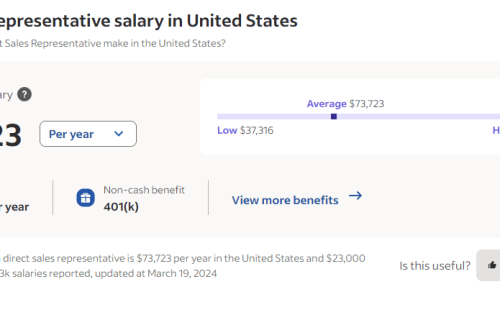Welcome, ambitious entrepreneurs! If you’re eager to make money online, mastering the art of SEO is essential. But did you know that SEO isn’t a one-size-fits-all game? Amazon SEO and Google SEO are two entirely different beasts, each with unique strategies and goals. Understanding these differences can be your secret weapon in the digital marketplace, giving you the edge over the competition.
In this article, we’ll break down the key distinctions between Amazon SEO and Google SEO, so you can optimize your approach and maximize your online earnings. Whether you’re selling products on Amazon or driving traffic to your website through Google, we’ve got you covered. Let’s dive in and unlock the secrets to SEO success!
Objective
Amazon SEO: The primary goal of Amazon SEO is to increase product visibility and drive sales. Amazon’s algorithm prioritizes listings that are likely to convert into purchases, focusing on providing users with the best shopping experience.
Google SEO: The objective of Google SEO is to drive traffic to websites and provide relevant information based on user queries. Google’s algorithm ranks content based on relevance and authority, ensuring users find the most pertinent answers to their questions.
Keywords
Amazon SEO: When it comes to Amazon SEO, focusing on transactional keywords is essential for capturing buyer intent. Keywords like product names, features, and specific terms that shoppers use—such as “wireless earbuds with noise-cancellation”—are crucial for optimizing your listings.
One fantastic tool that can assist you in creating optimized listings on Amazon is Keywords.am. This tool helps you identify effective keywords to enhance your visibility on Amazon, ensuring you attract the right customers who are ready to make a purchase. By leveraging such tools, you can improve your product’s discoverability and ultimately drive more sales.
Google SEO: Google utilizes a broader range of keywords, including informational and navigational ones. Content targeting these keywords can be educational, entertaining, or promotional. For instance, users might search for “best wireless earbuds for working out” or “how to choose noise-cancelling earbuds.”
When it comes to Google SEO, targeting a diverse range of keywords is essential. Users often search for both informational and navigational queries. Content that caters to these keywords can be educational, entertaining, or promotional. For example, people may look for “best wireless earbuds for working out” or “how to choose noise-cancelling earbuds.”
To optimize your content for these keywords, you can utilize various SEO tools. Here are some popular options:
- Ahrefs: This tool is excellent for keyword research, backlink analysis, and tracking your website’s performance. You can discover keyword ideas and understand how competitive they are.
- SEMrush: Another powerful tool for keyword tracking and competitor analysis. It helps you identify the best keywords for your niche and provides insights on how to improve your SEO strategy.
- Moz: Known for its user-friendly interface, Moz offers keyword suggestions, site audits, and tracking features to help enhance your site’s visibility.
- Google Keyword Planner: A free tool that helps you find keywords related to your business and see how a keyword might perform.
- Ubersuggest: This tool provides keyword suggestions, search volume data, and competitive analysis, making it easier to find the right keywords.
By leveraging these tools, you can create content that effectively targets a wide array of keywords, improving your chances of ranking higher in search results.
Content Types
Amazon SEO: Emphasizes product listings, including titles, bullet points, descriptions, and images. The quality and completeness of these elements significantly impact rankings. A detailed product listing with high-quality images and clear, concise bullet points can make a big difference.
Google SEO: Involves a wide variety of content types such as blog posts, articles, videos, and infographics. Quality content that answers user questions and provides valuable information tends to rank well. For example, a comprehensive blog post about the benefits of wireless earbuds could attract significant traffic.
Ranking Factors
Amazon SEO: Key factors include sales velocity, conversion rates, customer reviews, and product availability. The algorithm favors products that sell well and receive positive feedback. Listings with numerous positive reviews and high sales are more likely to appear at the top.
Google SEO: Important factors include backlinks, page load speed, mobile-friendliness, and content quality. Authority and relevance play a significant role in how pages are ranked. A well-optimized, fast-loading page with high-quality backlinks and engaging content will rank higher.
User Intent
Amazon SEO: Users on Amazon are typically ready to buy, so listings must be optimized for immediate purchase decisions. Effective product listings answer potential buyer questions quickly and clearly, helping them decide to purchase.
Google SEO: Users may seek information, entertainment, or products, leading to a broader range of content needs. Content on Google needs to be versatile to capture various intents, from learning about a product to understanding how to use it.
Performance Metrics
Amazon SEO: Focuses on metrics like sales rank, click-through rate (CTR) on listings, and conversion rates. High performance in these areas indicates a successful SEO strategy on Amazon. For example, a product with a high CTR and conversion rate will rank better.
Google SEO: Measures success through organic traffic, bounce rates, time on site, and user engagement metrics. Pages that attract and retain visitors while providing valuable content typically perform better in Google search results.
Comparison Table
|
Aspect |
Amazon SEO |
Google SEO |
|
|---|---|---|---|
|
Objective |
Increase product visibility and sales |
Drive traffic and provide information |
|
|
Keywords |
Transactional |
Broad (informational, navigational) |
|
|
Content Types |
Product listings |
Blog posts, articles, videos, infographics
|
|
|
Ranking Factors |
Sales velocity, conversion rates, reviews |
Backlinks, load speed, mobile-friendliness |
|
|
User Intent |
Ready to buy |
Informational, entertainment, purchase |
|
|
Performance Metrics |
Sales rank, CTR, conversion rates |
Organic traffic, bounce rates, engagement
|
Understanding the differences between Amazon SEO and Google SEO is essential for optimizing for each platform effectively. Each platform’s unique user intentions and ranking factors require tailored strategies to maximize visibility and drive traffic.





